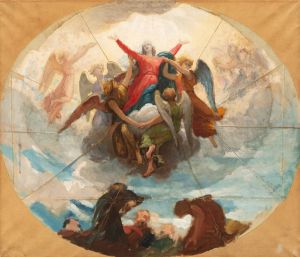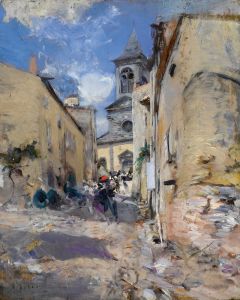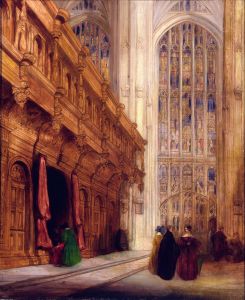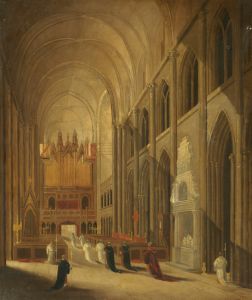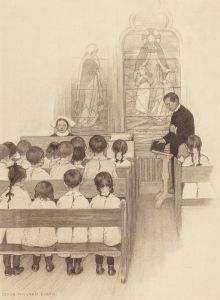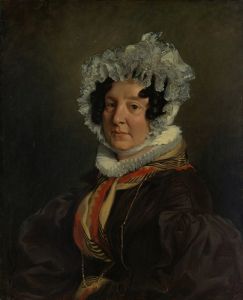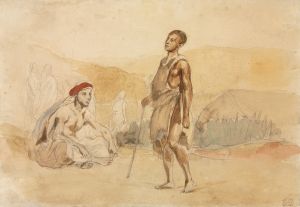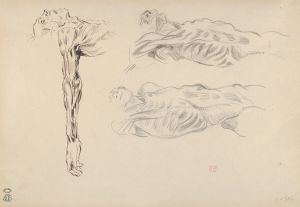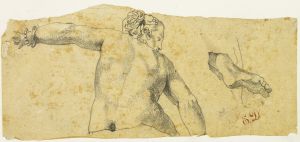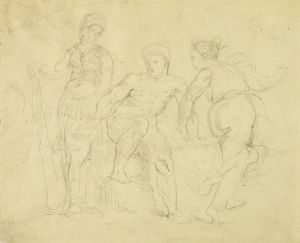
Le cardinal de Richelieu disant la messe dans la chapelle du Palais Royal
A hand-painted replica of Eugène Delacroix’s masterpiece Le cardinal de Richelieu disant la messe dans la chapelle du Palais Royal, meticulously crafted by professional artists to capture the true essence of the original. Each piece is created with museum-quality canvas and rare mineral pigments, carefully painted by experienced artists with delicate brushstrokes and rich, layered colors to perfectly recreate the texture of the original artwork. Unlike machine-printed reproductions, this hand-painted version brings the painting to life, infused with the artist’s emotions and skill in every stroke. Whether for personal collection or home decoration, it instantly elevates the artistic atmosphere of any space.
Eugène Delacroix, a prominent French Romantic artist, is renowned for his expressive brushwork and vibrant use of color. One of his lesser-known works is "Le cardinal de Richelieu disant la messe dans la chapelle du Palais Royal," which translates to "Cardinal Richelieu Saying Mass in the Chapel of the Palais Royal." This painting reflects Delacroix's interest in historical and religious themes, a common subject matter in his oeuvre.
The painting depicts Cardinal Richelieu, a significant political and religious figure in 17th-century France, performing a mass. Cardinal Richelieu, born Armand Jean du Plessis, was a cardinal of the Catholic Church and the chief minister to King Louis XIII. He played a crucial role in strengthening the central power of the monarchy and is often remembered for his influence on the politics of France during his tenure.
Delacroix's portrayal of Richelieu captures the solemnity and grandeur associated with the cardinal's position. The setting, the chapel of the Palais Royal, adds to the painting's historical significance. The Palais Royal, originally known as the Palais-Cardinal, was the residence of Cardinal Richelieu and later became a royal palace. The chapel within this palace would have been a place of both religious and political importance, serving as a backdrop for the cardinal's religious duties.
In terms of composition, Delacroix is known for his dynamic and dramatic style, which is evident in this work. Although specific details about the painting's dimensions, medium, and current location are not widely documented, Delacroix's technique typically involved bold colors and vigorous brushstrokes, contributing to the emotional intensity of his scenes. His works often convey a sense of movement and drama, characteristics that align with the Romantic movement's emphasis on emotion and individualism.
Delacroix's interest in historical subjects is well-documented, as seen in other works like "Liberty Leading the People" and "The Death of Sardanapalus." His ability to capture the essence of historical figures and events with emotional depth and vivid imagery is a hallmark of his artistic legacy. While "Le cardinal de Richelieu disant la messe dans la chapelle du Palais Royal" may not be as widely recognized as some of his other masterpieces, it nonetheless reflects his skill in rendering historical and religious narratives.
The painting also highlights Delacroix's fascination with the interplay of light and shadow, a technique he used to enhance the mood and focus of his compositions. This approach allows viewers to engage with the depicted scene on a deeper emotional level, drawing them into the historical moment portrayed.
In summary, "Le cardinal de Richelieu disant la messe dans la chapelle du Palais Royal" by Eugène Delacroix is a testament to the artist's ability to blend historical narrative with the expressive style characteristic of the Romantic era. Through his depiction of Cardinal Richelieu, Delacroix not only captures a significant historical figure but also invites viewers to reflect on the broader themes of power, faith, and history.





